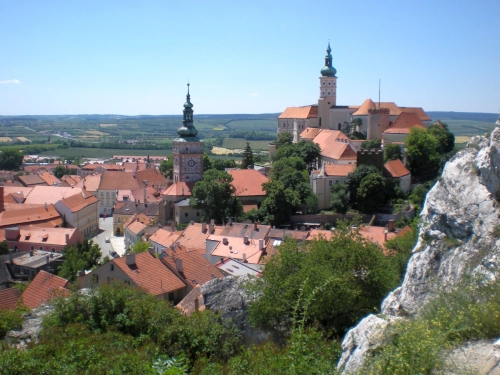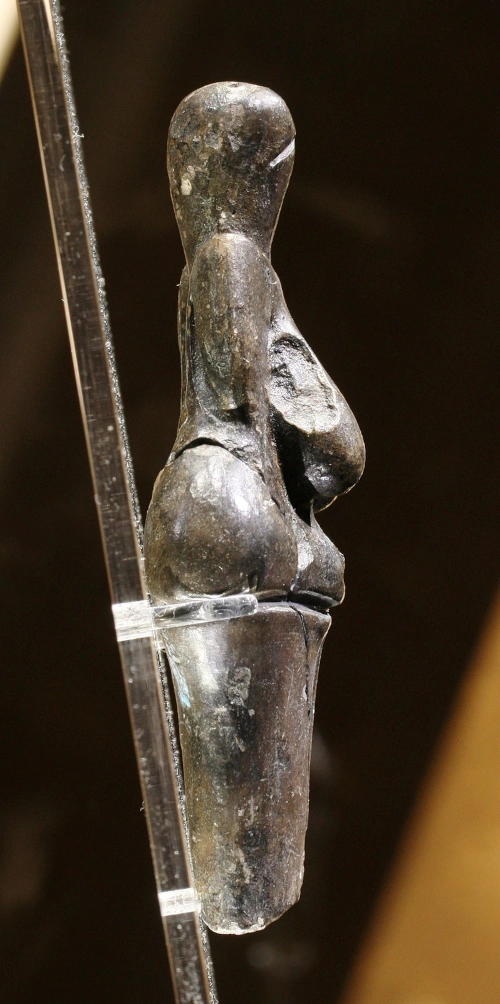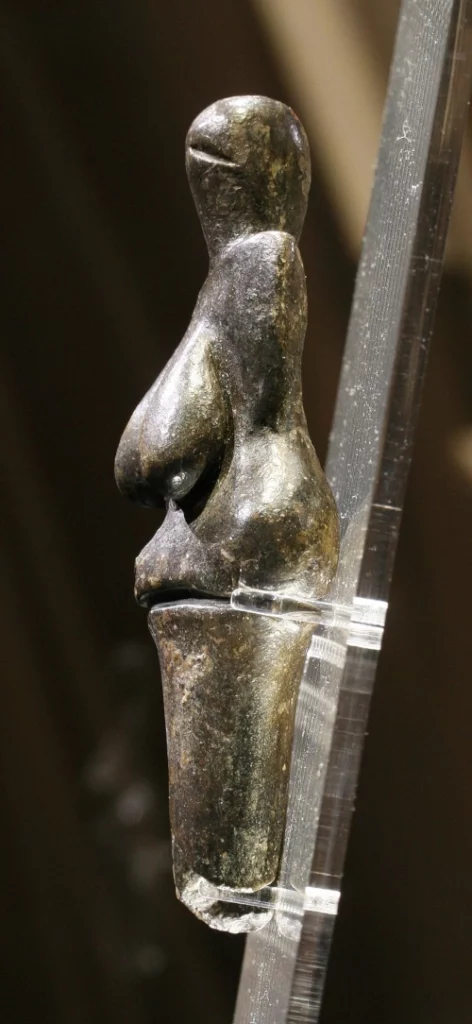It is a prehistoric ceramic artifact discovered in the Czech Republic. It is believed to be one of the oldest known depictions of the female form, dating back to over 25,000 years ago. The figurine is made of baked clay and is approximately 4.4 inches tall.
Revealing the Secrets: Insights into Prehistoric Culture and Symbolic Expression
The Venus of Dolni Vestonice is a fascinating prehistoric artifact that sheds light on early human societies. Discovered in the Czech Republic in 1925, this 26,000-year-old figurine is considered one of the earliest examples of human art. In this article, we will explore the history, discovery, and significance of the Venus of Dolni Vestonice, as well as controversies and preservation efforts. Join us on a journey to uncover the secrets of this iconic prehistoric work of art.
In recent years, there has been increasing interest in prehistoric art and the Venus of Dolni Vestonice has become an iconic example of this art form. Despite its small size, the Venus of Dolni Vestonice has captured the imagination of art historians, archaeologists, and the general public alike.
Discovery and Dating of the Venus of Dolni Vestonice
The Venus of Dolni Vestonice was discovered in 1925 by Czech archaeologist Karel Absolon during excavations at the Dolni Vestonice site in the Czech Republic. It was found alongside other prehistoric artifacts, including ceramics and stone tools.
The Venus of Dolni Vestonice was initially dated to the Gravettian period, which lasted from approximately 28,000 to 22,000 BCE. However, more recent dating methods have suggested that it may be as old as 29,000 years.
Description of the Venus of Dolni Vestonice
The Venus of Dolni Vestonice is a small figurine made of fired clay. It measures just over four inches in height and is believed to have been originally painted with red ochre.
The Venus of Dolni Vestonice has been interpreted as a representation of a woman, with a large head and exaggerated hips and breasts. The features of the face and body are stylized and abstract, with little attention paid to anatomical accuracy.
Despite its simple and stylized form, the Venus of Dolni Vestonice is considered to be a significant example of prehistoric art. Its abstract and stylized features have been interpreted as a deliberate choice by the artist to emphasize the important aspects of female fertility.
Context of the Venus of Dolni Vestonice
The cultural and historical context in which the Venus of Dolni Vestonice was created is an important topic of discussion among researchers and scholars. The Venus of Dolni Vestonice was created during the Paleolithic era, which is characterized by the use of stone tools and the emergence of early human societies.

The town of Mikulov. Moravia is a historical region in the east of the Czech Republic and one of three historical Czech lands, with Bohemia and Czech Silesia.
The Venus of Dolni Vestonice was discovered at a Paleolithic encampment in Dolni Vestonice, a small village in the eastern part of the Czech Republic. The encampment was used by early humans for hunting and gathering, and the Venus of Dolni Vestonice is believed to have been created during this period.
There are several theories regarding the purpose and function of the Venus of Dolni Vestonice. Some researchers believe that it was used as a fertility symbol or as a representation of a goddess. Others suggest that it may have been used in shamanic or religious rituals.
The Venus of Dolni Vestonice is similar to other prehistoric artifacts, such as the Venus of Willendorf and the Venus of Lespugue, which were also created during the Paleolithic era. These artifacts are characterized by their stylized depictions of the female form, which suggests that they may have had a symbolic or ritualistic function.
Significance of the Venus of Dolni Vestonice
The Venus of Dolni Vestonice is a significant artifact that provides important insights into the prehistoric era. It tells us about the artistic and technological capabilities of early humans and provides clues about their social and cultural practices.
The Venus of Dolni Vestonice is also significant because it contributes to our understanding of early human societies. It provides evidence of the emergence of symbolic and ritualistic practices, which suggests that early humans had complex social and cultural systems.
The Venus of Dolni Vestonice is significant because it provides insight into the social and cultural practices of prehistoric societies. Its focus on the importance of female fertility is suggestive of the important role of women in prehistoric societies.
The Venus of Dolni Vestonice has cultural significance because it is a representation of the artistic and cultural achievements of early humans. It is a reminder of our shared human history and provides a link to our past.
Furthermore, the Venus of Dolni Vestonice provides evidence of the artistic capabilities of prehistoric humans. It shows that humans were capable of creating complex and abstract forms that went beyond mere depictions of the natural world.
Controversies and Criticisms of the Venus of Dolni Vestonice
The controversy and criticism surrounding the Venus of Dolni Vestonice have been a subject of debate among archaeologists and historians. There are disagreements about the interpretation of the Venus of Dolni Vestonice, as well as the accuracy of the dating methods used to determine its age. Despite these controversies, the Venus of Dolni Vestonice remains an important and fascinating artifact that continues to capture the imagination of scholars and the public alike.
Despite its significance, the Venus of Dolni Vestonice has also been the subject of controversies and criticisms. One of the most significant controversies surrounding the artifact is its interpretation as a representation of a human figure.
The interpretation of the Venus of Dolni Vestonice has been the subject of several controversies and criticisms. Some researchers have suggested that the Venus of Dolni Vestonice may not be a representation of a female form, but rather a naturalistic depiction of a rock or a piece of debris.
Despite its significance, the Venus of Dolni Vestonice has been the subject of controversy and criticism. Some have argued that the Venus of Dolni Vestonice is not a deliberate representation of a woman, but rather a result of chance or the limitations of the artist’s skills. What if we just happed to find a piece of bad art?
Another criticism that has been raised regarding the Venus of Dolni Vestonice is its classification as a work of art. Some scholars argue that the artifact may not have been intended as a work of art, but rather as a functional object, such as a fertility symbol or an object used in a ritual context.
Other criticisms have been raised about the interpretation of the Venus of Dolni Vestonice as a representation of a goddess or a fertility symbol. Some researchers have suggested that the Venus of Dolni Vestonice may have had a more practical function, such as a weight used for fishing nets.
Despite these controversies and criticisms, the Venus of Dolni Vestonice remains an important artifact that provides valuable insights into the prehistoric era.
Preservation and Conservation of the Venus of Dolni Vestonice
The Venus of Dolni Vestonice is a fragile artifact that requires proper preservation and conservation to ensure its survival for future generations. The Venus of Dolni Vestonice is housed at the Moravian Museum in Brno, Czech Republic.
The Moravian Museum in Brno has taken steps to ensure its preservation, such as controlling the temperature and humidity levels in the display area, limiting exposure to light and oxygen, and preventing physical damage through careful handling and storage.
However, the preservation of prehistoric artifacts is a challenging task due to their fragility and the limited resources available for their preservation. The Venus of Dolni Vestonice is just one of many prehistoric artifacts that require proper conservation and preservation to ensure their survival for future generations.
What was the role of women in prehistoric societies, and how did they contribute to the production and use of art such as the Venus of Dolni Vestonice?
The role of women in prehistoric societies has been a topic of great interest and debate in the fields of anthropology and archaeology. While there is no definitive answer, scholars have made some generalizations based on the evidence we have.

Right Side
In the case of the Venus of Dolni Vestonice, it is believed that women played a crucial role in its production and use. The figure’s exaggerated features, such as the large breasts and hips, suggest that it may have been a fertility symbol, possibly used in rituals related to childbirth and motherhood.
Women in prehistoric societies were responsible for many domestic and artistic tasks, including making pottery, textiles, and other objects. They were also likely involved in the production of early cave paintings and sculptures. The Venus of Dolni Vestonice is just one example of the many artifacts that were likely created by women in prehistoric times.
While it is difficult to know the exact contributions of women to prehistoric art, we can look to the surviving artifacts for clues. In some cases, the objects themselves provide evidence of the techniques and materials used, which can give us insights into the people who created them.
Overall, the role of women in prehistoric societies is still a topic of ongoing research and debate, but it is clear that they played an important role in the production and use of art, such as the Venus of Dolni Vestonice.
What were the social and economic conditions that allowed for the creation of such sophisticated art forms in prehistoric times?
Prehistoric art represents some of the most impressive and sophisticated examples of human creativity in history. The production of such art forms required a complex social and economic environment that allowed for the emergence of specialized skills, social organization, and resource management. In the case of the Venus of Dolni Vestonice, it is believed that the social structure of the society was based on hunter-gathering and foraging, which involved a division of labor based on gender and age. Women played a significant role in the production and use of prehistoric art, including the Venus of Dolni Vestonice.
In prehistoric societies, women were responsible for a wide range of tasks, such as food gathering, childcare, and domestic activities. They also played an essential role in the production of tools and other objects, including textiles, pottery, and ornaments. Women were also involved in the creation of art forms, such as cave paintings and sculptures, as well as the decoration of objects, such as pottery and jewelry. The production and use of art in prehistoric societies were closely linked to social, economic, and religious practices.
One of the factors that allowed for the creation of such sophisticated art forms in prehistoric times was the emergence of specialized skills and social organization. As prehistoric societies became more complex, individuals began to specialize in specific activities, such as toolmaking, food gathering, and art production. This specialization allowed for the development of specialized knowledge and techniques that were passed down from generation to generation. It also led to the emergence of social hierarchies based on skill and knowledge.
Another factor that allowed for the creation of prehistoric art forms was the development of resource management. Prehistoric societies had to manage their resources carefully, including food, water, and raw materials for the production of tools and other objects. They also had to develop techniques for preserving food, such as smoking and drying, to ensure their survival during lean times. This resource management allowed for the creation of surplus resources, which could be used for the production of art and other non-essential objects.
In conclusion, the creation of sophisticated art forms in prehistoric times was the result of a complex interplay of social, economic, and environmental factors. The emergence of specialized skills and social organization, as well as resource management, allowing for the production of art that served social, economic, and religious functions. Women played a significant role in the production and use of prehistoric art, and their contributions to this field should not be overlooked. The study of prehistoric art can provide valuable insights into the social and economic conditions of prehistoric societies and the evolution of human creativity.
What other examples of prehistoric art from the same period or region can be compared to the Venus of Dolni Vestonice, and what can they tell us about the diversity and complexity of early human societies?
The Venus of Dolni Vestonice is not the only prehistoric art form from the same period or region. In fact, many other examples of prehistoric art have been found in the surrounding areas of the site. One notable example is the Lion Man of Hohlenstein Stadel, a 40,000-year-old ivory sculpture discovered in Germany.

Left Side
The Lion Man of Hohlenstein Stadel is a figurine of a lion-headed human that stands just under a foot tall. It is carved out of mammoth ivory and was discovered in a cave in southern Germany. The sculpture is highly detailed, and the features of the lion and the human are both meticulously crafted. The sculpture is believed to have been made using stone tools and was likely created by the same early human culture that produced the Venus of Dolni Vestonice.
Another example of prehistoric art from the same period and region is the cave paintings at Chauvet-Pont-d’Arc in France. These cave paintings were discovered in 1994, and are believed to be around 30,000 years old. The paintings depict a variety of animals, including horses, mammoths, and lions, and were created using natural pigments.
These examples of prehistoric art demonstrate the diversity and complexity of early human societies. They show that even in the distant past, humans were capable of creating highly sophisticated and detailed works of art. They also provide insights into the cultural and historical context in which these works were created and can help us to better understand the evolution of human societies over time.
What are the latest developments in scientific techniques for dating and analyzing prehistoric artifacts, and how might they change our understanding of the Venus of Dolni Vestonice and other similar objects?
Prehistoric artifacts such as the Venus of Dolni Vestonice have always presented a challenge to scientists and archaeologists in terms of dating and analysis. However, with the advancements in scientific techniques, researchers have been able to gain a deeper understanding of these ancient objects and the societies that created them.

Back
One of the latest developments in scientific techniques is the use of high-resolution imaging technologies, such as micro-computed tomography (micro-CT). This technique allows for a non-invasive, three-dimensional analysis of artifacts, revealing their internal structure and composition without the need for destructive sampling. This has been particularly useful in the analysis of ceramic objects, such as the Venus of Dolni Vestonice, which can provide valuable insights into the manufacturing process, and may reveal hidden details and features.
Another significant development in dating techniques is the use of radiocarbon dating, which allows for the precise dating of organic materials, such as bone, charcoal, and plant remains. This has been particularly useful in the dating of prehistoric sites and artifacts, providing a more accurate timeline of human history and cultural development.
Furthermore, the development of DNA analysis has allowed for the study of ancient human populations, their migration patterns, and their genetic relationships. This has shed new light on the diversity and complexity of early human societies, and how they interacted and evolved.
These scientific techniques have the potential to significantly change our understanding of prehistoric artifacts such as the Venus of Dolni Vestonice. By providing a more accurate timeline and deeper insights into manufacturing and cultural practices, we can gain a greater understanding of the social and economic conditions that allowed for the creation of such sophisticated art forms in prehistoric times.
The latest developments in scientific techniques for dating and analyzing prehistoric artifacts are constantly evolving, and as a result, our understanding of the Venus of Dolni Vestonice and other similar objects will continue to be refined and expanded. Through the continued use and development of these techniques, we may uncover new and exciting insights into the art and culture of our early human ancestors.
References
By che(Please credit as “Petr Novák, Wikipedia” in case you use this outside Wikimedia projects.)guidance: Danny B. – che, CC BY-SA 2.5, commons.wikimedia.org/w/index.php?curid=2682270
By RomanM82 – Own work, CC BY-SA 3.0, commons.wikimedia.org/w/index.php?curid=23827115






